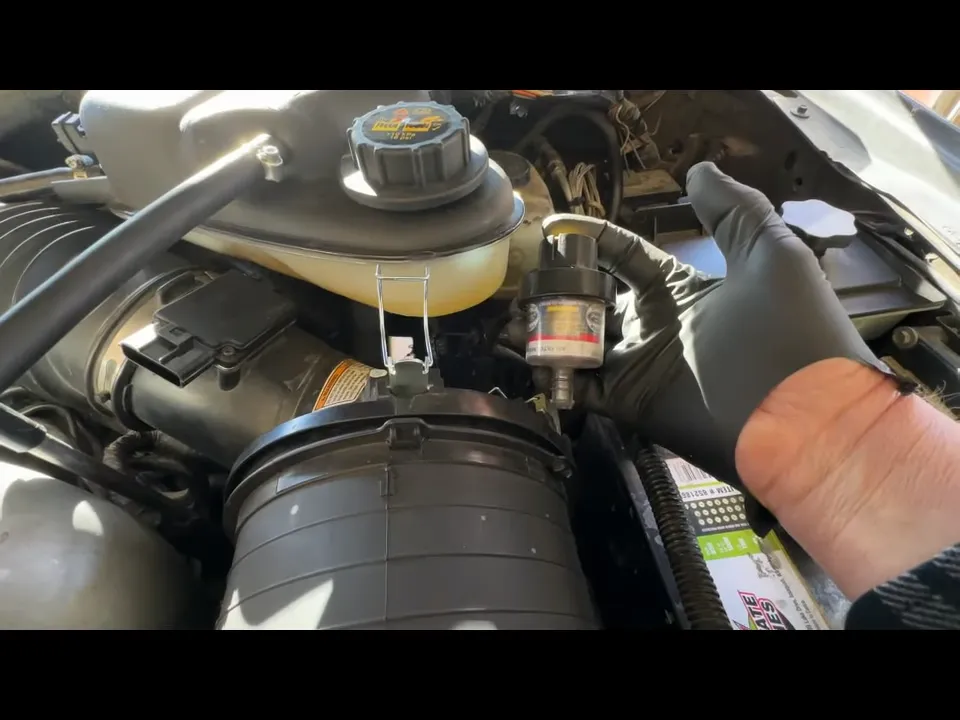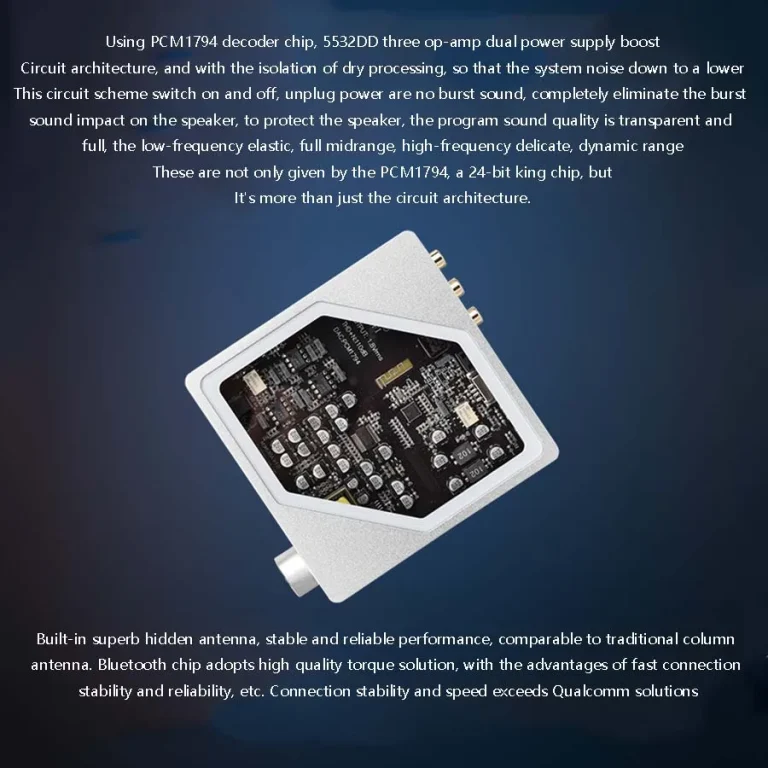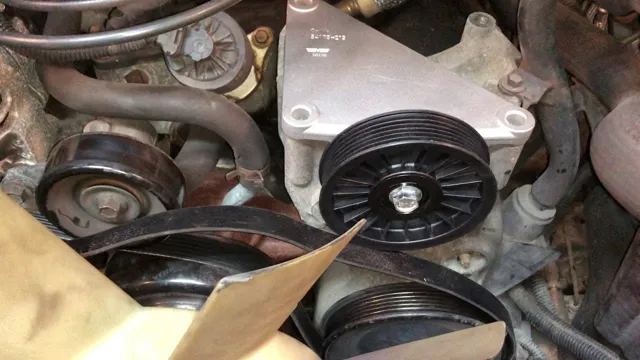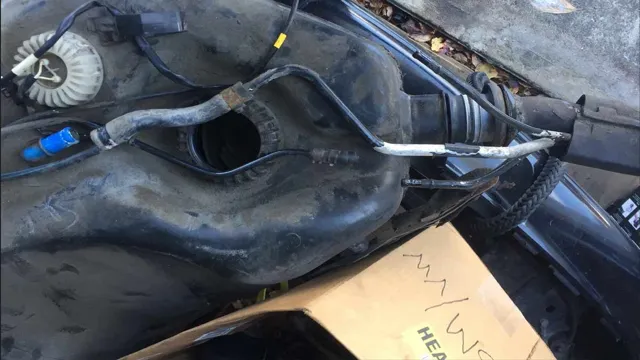6.0L Powerstroke Bad Exhaust Back Pressure Sensor Symptoms? (Guide 2024)
The exhaust back pressure sensor plays a crucial role in the performance of a 6.0 Powerstroke engine. It is responsible for monitoring the pressure levels within the exhaust system and providing vital information to the engine control module (ECM).
However, when the exhaust back pressure sensor becomes faulty or fails, it can lead to various issues that affect the engine’s performance and efficiency.
In this blog post, we will explore the significance of the exhaust back pressure sensor in a 6.0 Powerstroke engine and the symptoms that indicate a bad sensor.
We will discuss how a malfunctioning sensor can affect the engine’s operation, such as reduced power, decreased fuel efficiency, and potential drivability problems. Understanding these symptoms can help you identify and diagnose a bad exhaust back pressure sensor.
Additionally, we will highlight the importance of timely replacement or repair of the sensor to restore optimal engine performance. We will also provide insights into the diagnostic process and possible solutions for addressing a faulty exhaust back pressure sensor on a 6.0 Powerstroke engine.
Understanding the EBP Sensor
The EBP sensor monitors the pressure of exhaust gases exiting the engine. This information is fed to the engine computer (ECU) which adjusts various engine functions, including turbo boost and EGR valve operation. A healthy EBP sensor ensures optimal performance and protects your engine from excessive back pressure.
Symptoms To Detect A Bad EBP Sensor On 6.0 Powerstroke
Detecting a bad Exhaust Back Pressure (EBP) sensor on a 6.0 Powerstroke engine is crucial for maintaining optimal engine performance. Here are some common symptoms that may indicate a faulty EBP sensor:
1. Decreased Power and Acceleration
A malfunctioning EBP sensor can cause a decrease in engine power and acceleration. You may notice sluggishness when accelerating or a lack of responsiveness when pressing the throttle.
2. Poor Fuel Efficiency
A bad EBP sensor can disrupt the engine’s fuel-air mixture, leading to decreased fuel efficiency. If you find yourself refueling more frequently despite normal driving patterns, it could be a sign of a faulty EBP sensor.
3. Rough Idle and Stalling
An EBP sensor that is not functioning properly can result in a rough idle or even engine stalling. The sensor helps maintain proper air-to-fuel ratios during idle, and when it fails, it can cause an unstable idle or intermittent stalling.
4. Check Engine Light
A malfunctioning EBP sensor can trigger the check engine light (CEL) on your dashboard. It is important not to ignore this warning and have the engine’s diagnostic codes read to determine if the EBP sensor is the cause.
5. Smoke or Soot from Exhaust
If the EBP sensor is providing incorrect readings to the engine control module, it can affect the fuel injection timing and lead to excessive smoke or soot coming from the exhaust. This symptom is often accompanied by decreased engine performance.

What To Do If You Detect A Bad EBP Sensor On 6.0 Powerstroke Engine?
If you detect a bad Exhaust Back Pressure (EBP) sensor on your 6.0 Powerstroke engine, it is important to take the following steps to address the issue:
Confirm the Diagnosis
If you suspect a bad EBP sensor, it is recommended to have the engine properly diagnosed by a qualified mechanic. They will use diagnostic tools and procedures to confirm whether the EBP sensor is indeed the cause of the problem. This will ensure an accurate diagnosis and prevent unnecessary repairs.
Replace the EBP Sensor
If the EBP sensor is determined to be faulty, it should be replaced. It is important to use a high-quality replacement sensor that is compatible with your 6.0 Powerstroke engine. Professional mechanics or automotive parts suppliers can assist you in sourcing the correct sensor.
Clear Error Codes
Once the new EBP sensor is installed, it is advisable to clear any error codes that may have been triggered by the faulty sensor. This can be done using a diagnostic tool or by disconnecting the battery for a short period of time. Clearing the error codes will ensure that the engine control module recognizes the new sensor and can accurately monitor the system.
Test and Verify Operation
After replacing the EBP sensor and clearing the error codes, it is essential to test the engine and verify that the symptoms have been resolved. Take the vehicle for a test drive, paying attention to power delivery, acceleration, idle smoothness, and fuel efficiency. If the symptoms persist or new issues arise, further diagnosis may be required.
Regular Maintenance
To prevent future EBP sensor issues, it is important to follow the manufacturer’s recommended maintenance schedule for your 6.0 Powerstroke engine. This includes routine inspections, servicing, and replacing components as necessary. Regular maintenance helps identify and address potential issues before they become major problems.

How Often Should You Inspect Or Service 6.0 Powerstroke EBP Sensor?
The frequency of inspecting or servicing the Exhaust Back Pressure (EBP) sensor on a 6.0 Powerstroke engine may vary depending on various factors such as vehicle usage, driving conditions, and the manufacturer’s recommendations. However, here are some general guidelines to consider:
Follow Manufacturer’s Recommendations
The first step is to consult your vehicle’s owner’s manual or the manufacturer’s guidelines for the recommended inspection or service intervals specific to the EBP sensor. Manufacturers often provide specific recommendations for maintenance and inspections based on mileage or time intervals.
Regular Maintenance Schedule
As a general rule, it is advisable to include EBP sensor inspections as part of your regular maintenance schedule. This can be done during routine engine check-ups or when performing other maintenance tasks. Regular inspections can help detect any potential issues with the EBP sensor before they lead to significant problems.
Pay Attention to Symptoms
It is essential to pay attention to any symptoms that may indicate EBP sensor problems, such as decreased power, rough idle, poor fuel efficiency, or engine stalling. If you notice these symptoms consistently, it is recommended to have the EBP sensor inspected, regardless of the scheduled maintenance.
Driving Conditions
If you frequently drive in harsh conditions, such as dusty or off-road environments, it may be necessary to increase the frequency of EBP sensor inspections. These conditions can contribute to sensor contamination or accelerated wear, necessitating more frequent checks and maintenance.
Vehicle Modifications
If your 6.0 Powerstroke engine has undergone modifications that could potentially affect the EBP sensor or its readings, it is advisable to consult with a qualified mechanic or technician. They can provide guidance on the appropriate inspection and service intervals specific to your modified setup.
What happens when the EBP sensor fails on the Powerstroke 6.0?
When the Exhaust Back Pressure (EBP) sensor fails on the Powerstroke 6.0 engine, several issues may arise. One consequence of EBP sensor failure is the potential decrease in exhaust pressure regulation. In such a scenario, the engine control unit may not receive accurate information to adjust engine speed, leading to inadequate back pressure for expelling exhaust gases efficiently. Consequently, the engine might be compelled to work harder to produce the necessary pressure, which can result in increased fuel consumption and strain on engine components. Furthermore, a malfunctioning EBP sensor may also impact the Exhaust Gas Recirculation (EGR) system’s operation. Without proper communication between the EBP sensor and the engine control unit, the EGR system may not function optimally in recirculating exhaust gas. This disruption in the exhaust gas recirculation process could potentially cause overheating of the exhaust gas, leading to damage to engine components and necessitating more frequent replacements of diesel parts. In summary, when the EBP sensor fails on the Powerstroke 6.0, it can lead to issues such as ineffective exhaust pressure regulation, increased fuel consumption, potential damage to engine parts due to overheating, and inefficient operation of the EGR system.
Diagnosing and Repairing a Faulty EBP Sensor
While a code reader can provide valuable clues, a qualified mechanic can definitively diagnose a faulty EBP sensor using specialized tools and procedures. Replacing the sensor is a relatively straightforward repair for an experienced mechanic.
Keeping Your 6.0 Powerstroke Healthy
Routine maintenance is key to preventing EBP sensor problems. Regularly check your engine for leaks or clogs that could contribute to excessive back pressure. Sticking to recommended service intervals and using high-quality fuel filters can also help extend the life of your EBP sensor.
By understanding the symptoms of a failing exhaust back pressure sensor and taking preventative measures, you can ensure your 6.0L Powerstroke continues to breathe easy and deliver reliable performance for miles to come.
FAQ:
Q: What are the symptoms of a bad Exhaust Back Pressure (EBP) sensor in a 6.0L Powerstroke engine?
A: Common symptoms of a bad EBP sensor in a 6.0L Powerstroke engine include decreased power and acceleration, poor fuel efficiency, rough idle, engine stalling, and excessive smoke from the exhaust. These symptoms may vary in severity, and experiencing one or more of them consistently may indicate a faulty EBP sensor.
Q: How does a bad EBP sensor affect engine performance?
A: A bad EBP sensor can disrupt the engine’s air-to-fuel ratio, leading to decreased power and acceleration. It can also cause the engine to run rich or lean, resulting in poor fuel efficiency. The sensor’s failure to provide accurate readings to the engine control module can cause an unstable idle or even engine stalling. Additionally, incorrect EBP readings can affect fuel injection timing, resulting in excessive smoke or soot from the exhaust.
Q: Can a bad EBP sensor trigger the check engine light (CEL)?
A: Yes, a malfunctioning EBP sensor can trigger the check engine light (CEL) on the vehicle’s dashboard. The engine control module detects abnormal sensor readings and illuminates the CEL to indicate a potential issue. When the CEL is illuminated, it is recommended to have the vehicle’s diagnostic codes read to determine if the EBP sensor is the underlying cause.
Q: Can I continue driving with a bad EBP sensor?
A: It is not recommended to continue driving with a bad EBP sensor. Ignoring the symptoms and failing to address the issue can lead to further engine performance problems and potential damage to other engine components. It is advisable to have the sensor inspected and repaired or replaced by a qualified mechanic to restore proper engine operation.
Q: Can I replace the EBP sensor myself?
A: The replacement of the EBP sensor in a 6.0L Powerstroke engine requires technical knowledge and proper tools. It is recommended to have a qualified mechanic or technician handle the replacement to ensure correct installation and prevent any potential issues. They can also perform diagnostic tests to confirm that the new sensor resolves the problem and verify the sensor’s operation.
Q: How can I prevent EBP sensor issues in my 6.0L Powerstroke engine?
A: To prevent EBP sensor issues, it is essential to follow the manufacturer’s recommended maintenance schedule for your 6.0L Powerstroke engine. Regular inspections, servicing, and replacing components as necessary can help detect and address potential issues before they become major problems. Additionally, using high-quality fuel, maintaining a clean air filter, and driving under normal conditions can contribute to the longevity of the EBP sensor and the overall engine performance.






